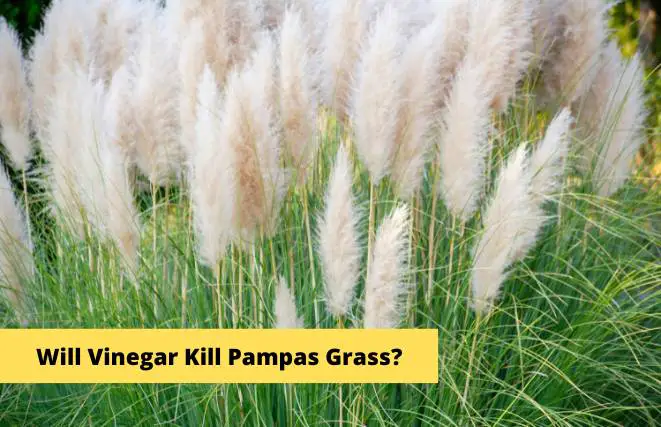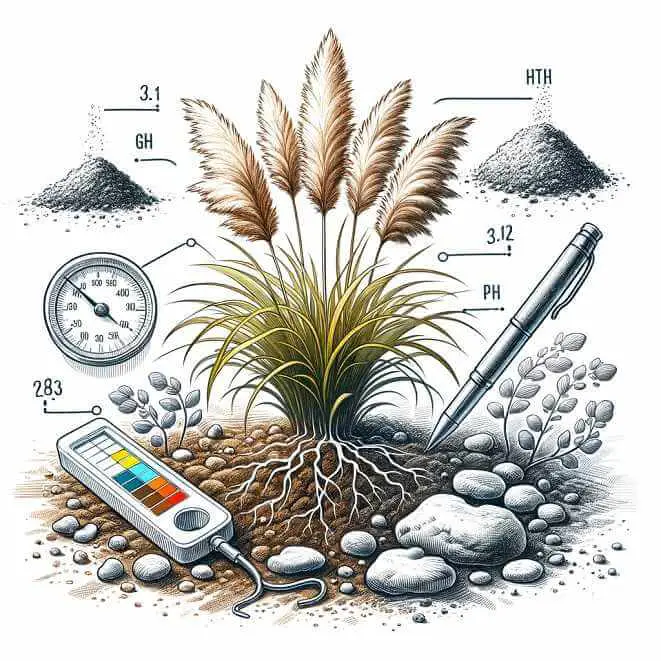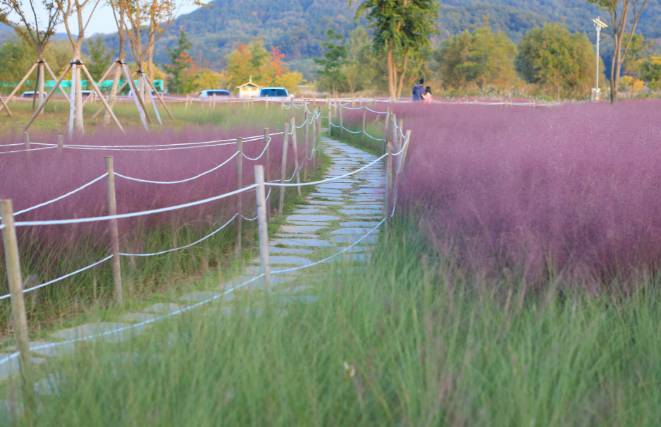Dividing ornamental grasses is a key aspect of maintaining their health and vitality, but the timing of this process can be critical. While many garden tasks are traditionally associated with the spring or fall, what about dividing ornamental grasses in the summer? Is it a good idea to tackle this chore when the sun is high and temperatures are soaring? Let’s delve into this gardening quandary and explore whether summer is a suitable season for dividing these beloved landscape elements.
Understanding Ornamental Grasses
Before we delve into the timing of division, let’s get to know our green friends a bit better.
Ornamental grasses are, as the name suggests, grass-like plants that are grown for their aesthetic appeal rather than their utility. They come in various shapes, sizes, and colors, making them versatile additions to your garden. These grasses offer year-round interest, from their lovely plumes in the summer to their beautiful winter structure.
So, why would you want to divide these lovely plants?
Reasons to Divide Ornamental Grasses:
- Health and Vigor: Dividing grasses rejuvenates them. Over time, the center of a grass clump can become dense and less productive. Dividing helps promote new growth and better health.
- Garden Aesthetics: Dividing maintains the overall attractiveness of your garden. Neglected grasses can quickly become unruly, detracting from the beauty of your outdoor space.
Now that we appreciate the importance of division, let’s explore when the ideal time to do it is.
When to Divide Ornamental Grasses
Spring Division
Advantages of Spring Division:
- Mild Weather: Spring provides a gentle environment for your grasses to recover from division.
- Pre-Growth Season: Dividing before the active growing season allows plants to establish themselves.
- Clear Visibility: Early spring offers a clear view of the plant’s structure before new growth obscures it.
Ideal Conditions for Spring Division:
- Workable Soil: Choose a day when the soil is workable but not waterlogged.
- Mild Temperatures: Aim for a day with mild temperatures, ideally before the grass starts actively growing.
Examples of Grasses Suited for Spring Division:
- Feather Reed Grass (Calamagrostis x acutiflora)
- Blue Oat Grass (Helictotrichon sempervirens)
- Pampas Grass (Cortaderia selloana)
Fall Division
Benefits of Fall Division:
- Cooler Temperatures: Fall’s cooler weather reduces stress on the transplants.
- Root Establishment: Divisions have time to establish their root systems before the harsh winter arrives.
- Clear Plant Structure: By the fall, the plant’s structure is again visible after the growing season.
Conditions and Considerations for Fall Division:
- Mild Temperatures: Aim for a day with mild temperatures, ideally before the first frost.
- Preparation: Water your grasses well in late summer to prepare them for division.
- Good Drainage: Choose a location with good drainage to prevent waterlogging.
Examples of Grasses Suitable for Fall Division:
- Maiden Grass (Miscanthus sinensis)
- Fountain Grass (Pennisetum alopecuroides)
Now that we’ve explored spring and fall division, let’s answer the burning question: Can you divide ornamental grasses in the summer?
Can You Divide Ornamental Grasses in the Summer?
While spring and fall are the preferred times for division, summer is not entirely off the table. However, there are some significant challenges and considerations to keep in mind.
Challenges of Summer Division
- Heat Stress: Dividing grasses in the summer heat can be stressful for the plants. The high temperatures and intense sun can cause shock and damage.
- Water Requirements: Summer division may require more frequent watering to keep the transplants adequately hydrated.
- Transplant Shock: The stress of division can lead to transplant shock, where the grasses struggle to establish themselves in their new location.
- Limited Growth Time: Summer divisions have less time to establish their root systems before winter, potentially making them more vulnerable.
Grass Variety Matters
The suitability of summer division can vary depending on the type of grass you’re dealing with. Some grasses are hardier and more resilient, while others may struggle with the summer division process.
Grasses That Tolerate Summer Division Better:
- Zebra Grass (Miscanthus sinensis ‘Zebrinus’)
- Switchgrass (Panicum virgatum)
When to Consider Summer Division
While summer division is generally more challenging, there are specific circumstances where it might be necessary or preferred.
Specific Circumstances
- Overcrowded Growth: If your grasses have become severely overcrowded, division might be necessary for their health, even in the summer.
- Garden Renovations: If you’re redesigning your garden or making significant changes, summer division might be more convenient.
Mitigating Stress
If you find yourself needing to divide ornamental grasses in the summer, you can take steps to minimize stress on the plants.
- Watering: Ensure the transplants receive adequate water. Water deeply and consistently to help them establish their roots.
- Shade: Provide some temporary shade for the newly divided grasses to shield them from the intense summer sun.
- Mulch: Apply a layer of mulch around the transplants to conserve moisture, regulate soil temperature, and reduce weed competition.
- Avoid Over-Fertilizing: While some fertilization may be necessary, avoid over-fertilizing, which can further stress the plants.
Expert Opinions and Experiences
To provide a well-rounded perspective, let’s consider the insights and experiences of gardening experts and enthusiasts.
Gardener’s Tip: Mary, an experienced gardener, suggests, “If you must divide in the summer, do it early in the morning or late in the afternoon when it’s cooler. Provide extra care with watering, and keep an eye on the transplants for any signs of stress.”
Expert Advice: Dr. Green Thumb, a horticulturist, advises, “While it’s possible to divide in the summer, it’s generally riskier. Consider your grass type, local climate, and the specific needs of the plant. If possible, wait for the milder seasons.”
What is the best time of year to split grasses?
The best time of year to split or divide ornamental grasses is typically in early spring or late summer to early fall. Here’s a bit more detail on each season:
| Season | Best Time for Division | Key Considerations |
|---|---|---|
| Early Spring | Before active growth starts | Mild weather |
| While grasses are still dormant | New growth not obscuring plant | |
| Helps establish roots before the growing season | ||
| Late Summer to Early Fall | Cooler weather than summer | Divisions need time to establish before winter |
| Suitable for cool-season grasses | Avoid late-fall divisions due to frost | |
| Summer (if necessary) | Possible but more challenging | High heat can stress plants |
| Requires extra care and watering | Best for hardier grass varieties |
READ MORE: When to Divide Ornamental Grasses
FAQ
Transplanting tall ornamental grasses in the summer is feasible but requires careful attention to mitigate the stress caused by high temperatures. If you must transplant during this season, opt for cooler times of the day and prepare the new location with amended soil and adequate irrigation. Be gentle when handling the grasses, preserving their root balls as much as possible. Keep them shaded and hydrated throughout the process, and water them immediately after transplanting. Consistently monitor the transplants, providing additional water during hot and dry spells. However, it’s generally recommended to transplant ornamental grasses during cooler seasons like late winter or early spring to minimize stress and enhance their chances of successful establishment.
Transplanting ornamental grasses in the fall is often a favorable option. During this season, soil temperatures are still warm enough to encourage root growth, and the cooler air temperatures reduce stress on the plants. It’s important to complete the transplanting before the ground freezes, allowing the grasses time to establish their root systems before winter. Adequate watering and soil preparation are key for successful fall transplanting. Keep the transplants well-watered until the ground freezes to ensure they have enough moisture to survive the winter. Overall, fall is a suitable time for transplanting ornamental grasses, offering a balance of favorable conditions and reduced transplanting stress.
Conclusion
In the world of gardening, timing is often key to success. While spring and fall remain the optimal seasons for dividing ornamental grasses, summer division can be undertaken in certain situations. It’s crucial to weigh the challenges and consider the specific needs of your grass variety.
Remember, the health and vitality of your grasses should always be your top priority. Whether you choose spring, fall, or even summer, providing your plants with the care they need will ensure they continue to grace your garden with their beauty for years to come. Happy gardening!









